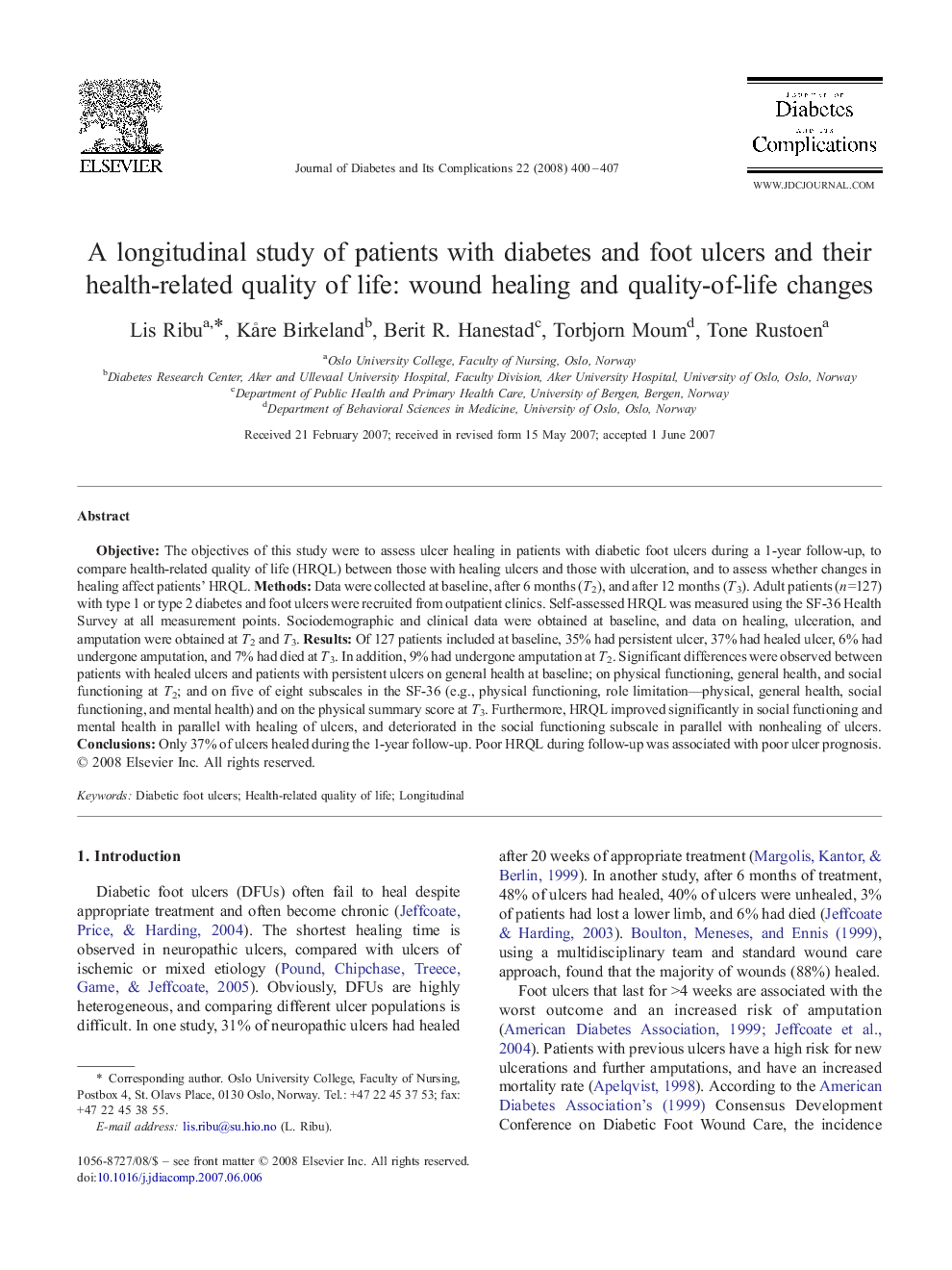| Article ID | Journal | Published Year | Pages | File Type |
|---|---|---|---|---|
| 2804800 | Journal of Diabetes and its Complications | 2008 | 8 Pages |
ObjectiveThe objectives of this study were to assess ulcer healing in patients with diabetic foot ulcers during a 1-year follow-up, to compare health-related quality of life (HRQL) between those with healing ulcers and those with ulceration, and to assess whether changes in healing affect patients' HRQL.MethodsData were collected at baseline, after 6 months (T2), and after 12 months (T3). Adult patients (n=127) with type 1 or type 2 diabetes and foot ulcers were recruited from outpatient clinics. Self-assessed HRQL was measured using the SF-36 Health Survey at all measurement points. Sociodemographic and clinical data were obtained at baseline, and data on healing, ulceration, and amputation were obtained at T2 and T3.ResultsOf 127 patients included at baseline, 35% had persistent ulcer, 37% had healed ulcer, 6% had undergone amputation, and 7% had died at T3. In addition, 9% had undergone amputation at T2. Significant differences were observed between patients with healed ulcers and patients with persistent ulcers on general health at baseline; on physical functioning, general health, and social functioning at T2; and on five of eight subscales in the SF-36 (e.g., physical functioning, role limitation—physical, general health, social functioning, and mental health) and on the physical summary score at T3. Furthermore, HRQL improved significantly in social functioning and mental health in parallel with healing of ulcers, and deteriorated in the social functioning subscale in parallel with nonhealing of ulcers.ConclusionsOnly 37% of ulcers healed during the 1-year follow-up. Poor HRQL during follow-up was associated with poor ulcer prognosis.
